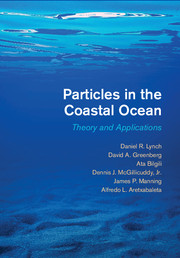Book contents
- Frontmatter
- Dedication
- Contents
- About the Authors
- Preface
- Acknowledgments
- List of Acronyms
- Definitions and Notation
- Introduction and Scope
- Part I Background
- Part II Elements
- Part III Applications
- Part IV Appendices
- A Series, Sums, Limits
- B Complex Numbers
- C Wiener Integrals
- D Rates and Rate Limiters
- E Diffusion Solutions
- F Covariance Matrix for Shear and Convergence
- G Summary – ARn Recursions
- H Distribution Properties for Linear Triangles
- Bibliography
- Index
- Plate Section
Introduction and Scope
Published online by Cambridge University Press: 05 January 2015
- Frontmatter
- Dedication
- Contents
- About the Authors
- Preface
- Acknowledgments
- List of Acronyms
- Definitions and Notation
- Introduction and Scope
- Part I Background
- Part II Elements
- Part III Applications
- Part IV Appendices
- A Series, Sums, Limits
- B Complex Numbers
- C Wiener Integrals
- D Rates and Rate Limiters
- E Diffusion Solutions
- F Covariance Matrix for Shear and Convergence
- G Summary – ARn Recursions
- H Distribution Properties for Linear Triangles
- Bibliography
- Index
- Plate Section
Summary
The Coastal Ocean
The coastal ocean comprises the semi-enclosed seas on the continental shelf, including estuaries and extending to the shelf break. Geographically the scope is approximately that of the Exclusive Economic Zone for which nation-states are responsible.
The coastal ocean is the focus of many serious concerns, including coastal inundation by tide, storm, or sea level change; fisheries and aquaculture management; water quality, health, and pollution; harmful algae blooms; facilities siting and planning; ports and harbor development and maintenance; spills and other accidents. All fall within the scope of science, engineering, and development. All demand professional competence in promoting wise and healthy use of this critical region, and in anticipating, monitoring, and responding to events therein.
The Virtual Environment
Computational Circulation Products. A realistic simulated or virtual environment (herein “the environment”) is becoming available for scientific and engineering use. This takes the form of site-specific computational products for the baseline physical fields. Simulated particles in these fields offer the possibility of high realism, facilitating advanced analysis.
Equations and Variables. Well-defined equations and variables characterize the coastal ocean. For our purpose, the bundle of “physical” variables includes pressure, velocity, temperature, salinity, light, nutrients, and subgrid or unresolved mixing rates (typically in the form of turbulent energy, mixing length, a stability parameter, and eddy diffusivity). These all share very conventional formulations for their evolution and transport. This scientific foundation has advanced very far and supports the construction of site-specific environments.
Randomness. There will always be unresolved dynamics, and they must be accounted for, both in motion and in biotic development. At the simplest level, there is truncation error, equation error, and forcing uncertainty. These all contribute to a distribution of possibilities for the environment itself. In addition, there is uncertainty about basic biotic rates and their distribution across individuals in the same population. Perhaps most fundamentally, in setting out a gridded calculation and product, the real motion at the subgrid will have at best a statistical description. Particles live in the subgrid, and influences there can only be statistically described.
- Type
- Chapter
- Information
- Particles in the Coastal OceanTheory and Applications, pp. xxix - xxxivPublisher: Cambridge University PressPrint publication year: 2014

